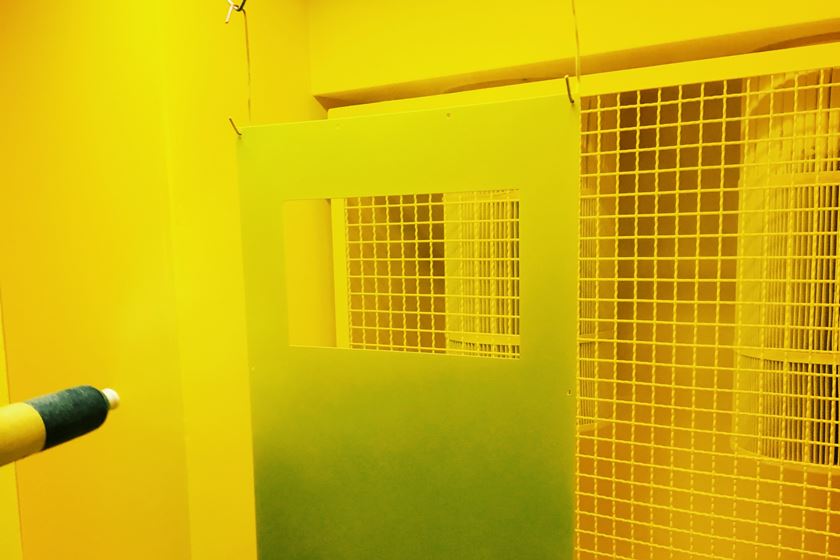Alternative to Traditional Alkaline Cleaners Lowers Costs
To lower cleaning costs, consider switching from your current alkaline cleaner to a true neutral pH cleaner.
These electron microscope photos show that true neutral cleaners clean better than alkaline cleaners. Source: Environmentally Sensitive Solutions Inc.
Q. How can I lower operating costs on my parts cleaning process without sacrificing cleanliness or quality?
A. While there are a number of ways to tighten up a parts cleaning process to reduce operating costs (for example, upgrading wash/drying equipment and utilities), one of the easiest ways might be to switch from the current alkaline cleaner to a true neutral pH cleaner. True neutral cleaners are not watered-down alkaline cleaners with sodium bicarbonate (baking soda) replacing sodium hydroxide (caustic), although the industry sometimes refers to them that way. A true neutral cleaner has a neutral pH of 6.5 – 7.5, both concentrated and diluted.
Featured Content
Alkaline cleaners have been around since the 1960s to replace solvent cleaners and are by far the most commonly used parts cleaning product for cleaning a variety of parts in a variety of washer styles. Acidic cleaners are used to clean/brighten and deoxidize parts in more niche parts applications. Solvents are still used on occasion, although on a limited basis for specific applications.
True neutral cleaners evolved about 35 years ago as a viable and cost-effective replacement for alkaline cleaners. True neutral cleaners are used in a variety of cleaning equipment styles including spray, immersion, rotary drum, vibratory, ultrasonics and pressure washers. True neutral cleaners have successfully cleaned the gamut of industrial parts processing soils, including synthetic coolants, semi-synthetic coolants, chlorinated paraffin oils, machining oils, buffing compounds, drawing compounds, among others.
There are many ways properly formulated true neutral cleaners can eliminate costs generated using traditional alkaline cleaners:
- Wastewater simplification and reduction: True neutral cleaners automatically split oils for recovery, eliminate heavy metal solubilization and do not require pH neutralization prior to discharge. Oftentimes, wastewater generated by true neutral cleaners is categorized as non-regulated.
- Better part quality for less rework and scrap: True neutral cleaners rinse better with less residue and less rinse water needed. Neutral pH eliminates potential etching of soft metals without the need for silicates, so white rust on metals like aluminum is eliminated. The quality of post-cleaning part bonding processes can be dramatically improved (with less scrap) because the surface to be bonded is cleaner and contains less residue when washed with a true neutral cleaner.
- Multi-metal safe: True neutral cleaners can be safely and interchangeably used on any type of metal part, including aluminum, brass, copper, stainless steel, steel (among others) without the need for silicates of alkaline cleaners. Neutral cleaners can reduce the number of different alkaline parts cleaning products for various metal types.
- Wash bath-life extended: True neutral cleaners automatically split oils (once bath agitation stops) for easy skimming and recovery, thus extending bath-life for reduced cleaning costs.
- Reduces wash equipment wear and tear: True neutral cleaners significantly reduce the residue build-up in wash equipment and the labor needed to routinely clean nozzles and regularly maintain washers. The ongoing expense of acid boil-outs is eliminated.
- Worker safety and protection: True neutral cleaners almost eliminate the chance for worker injury because of chemical exposure from high pH alkaline cleaners. The neutral pH cleaner is non-corrosive and non-hazardous, vastly simplifying worker chemical training, personal protection equipment and expense.
- Product simplification: Alkaline cleaners often require additives like wetters and defoamers to be purchased and added separately tank side for the alkaline cleaner to function properly. True neutral cleaners eliminate those additives in that wetting and foam control is built into the formulation itself.
- Lower freight costs: Because they are not limited by ingredient solubility issues like alkaline cleaners, true neutral cleaners can be super concentrated to 2x and beyond to cut freight costs. At a 2x concentrate, it is like getting two drums in one, which cuts freight costs almost in half.
- Greener alternative: As parts manufacturing companies are “greening” up their products and processes, true neutral cleaners can play a hugely positive role in that narrative by being more environmentally friendly than alkaline cleaners without sacrificing performance.
True neutral cleaners are a drop-in replacement for alkaline cleaners in most parts cleaning applications. Other than some initial cleaning of an alkaline washer switching over to a neutral cleaner, true neutral cleaners simplify wash processes and reduce costs.
About the Author
Matt Pliszka
Matt Pliszka is a true neutral cleaner formulating pioneer and parts cleaning expert, with a 37-year track record of success at Environmentally Sensitive Solutions Inc. (ESS). Visit neutralcleaner.com for more information.
RELATED CONTENT
-
Are TGIC-Free Powder Coatings Right For You?
This alternative to TGIC-based polyester powder coatings offers similar performance and enhanced transfer efficiencies.
-
The Hull Cell: Key to Better Electroplating - Part I
How to use it for planning, preventive maintenance and troubleshooting.
-
Stripping of Plated Finishes
The processes, chemicals and equipment, plus control and troubleshooting.



















